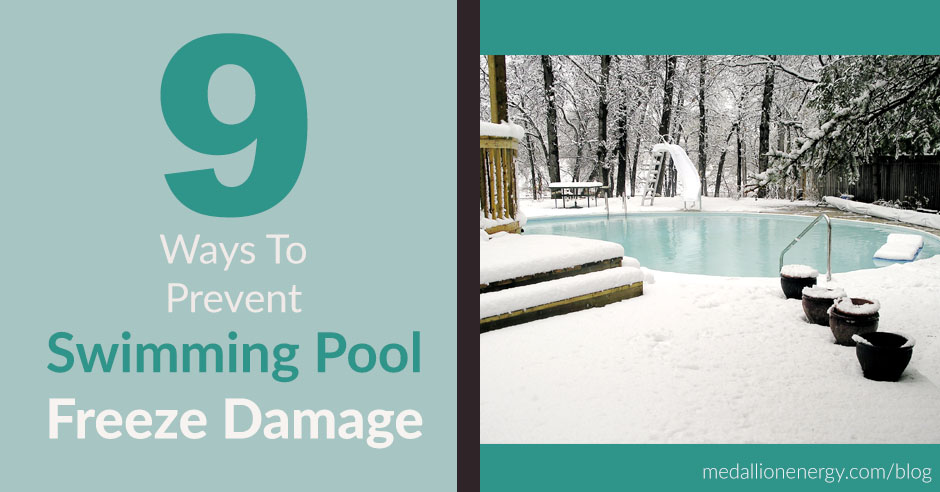Pool freeze damage is no joke. And when the winter months come rolling around, you can either close your pool or keep it open. And either choice is safe…as long as you go about it the right way.
Today, we’re focusing on the pool owners who want to keep their pools open during the winter. You, the person reading this.
Keeping your pool open throughout the winter months is doable, it just takes a few more steps. Because nearly every pool owner’s biggest fear is waking up to a frozen swimming pool — from burst pipes to cracked equipment, ignoring freeze damage prevention can have some serious consequences.
But in this post, we go over 9 simple ways to prevent your swimming pool from freezing. And we also cover how to protect your pipes and pool equipment. So if that sounds good to you keep reading, and learn how to prevent freeze damage and protect your pool.
9 Ways To Prevent Swimming Pool Freeze Damage
1.) Know when winterizing your swimming pool is the best choice
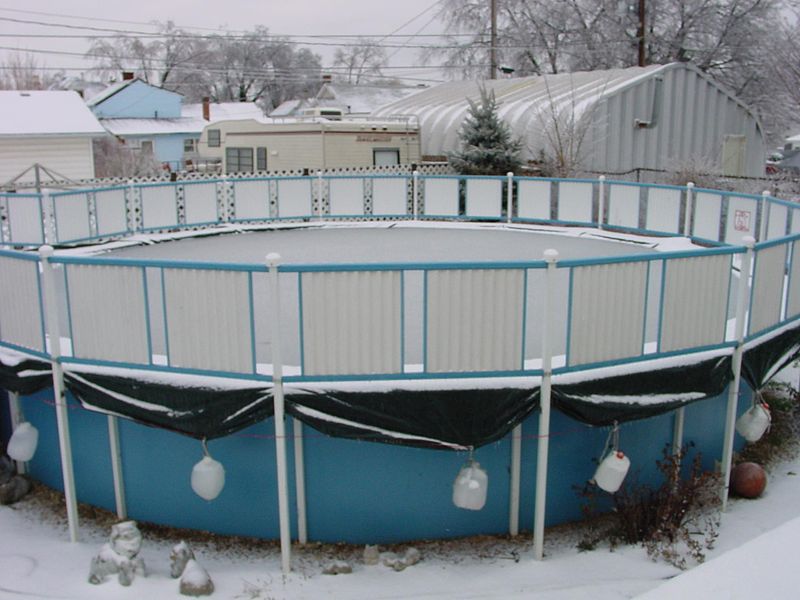


We’re putting this first because it’s the most effective freeze damage prevention tip we can give you.
Keeping your pool warm is the most effective way to avoid freeze damage, period. As long as you can keep your pool water moving, and at a constant temperature above the freezing point of 32 degrees, you’re safe.
But if you can’t do that for any reason, whether it be cost or heating ability, closing your pool is the safer option.
Here are a few important factors to consider when deciding on whether or not to winterize your swimming pool:
- The average winter temperature in your location
- While pool owners in the south and west coasts deal with mild winters that rarely drop below 40 degrees, pool owners in the northeast experience temperatures as low as 0 degrees for days at a time.
- Consider how easy, or difficult it will be to keep your pool warm given your location and climate.
- The cost of running your heater and pump more
- In order to keep your pool water from freezing, you’ll have to keep it warm. And that means running your heater more often. Maybe even 12+ hours a day in some cases— consider if the increase in heating costs fits within your budget
- A pool heat pump can help keep costs low with energy-efficient performance
- The cost of running your filter pump (more on this later)
- In order to keep your pool water from freezing during colder temperatures, you’ll have to keep it moving
- Using a variable speed pool pump at low speed is a good option for keeping the water flowing and your wallet happy
Related: How To Close Your Inground Pool in 5 Easy Steps
2.) Keep the pool covered to lock in heat
Using a pool cover is the best way to keep your pool warm and retain the heat generated from your heater. Covering your pool is just like covering a pot of water on the stove: it warms it up faster and keeps the heat locked in.
So to keep costs lower during the winter, use a cover to reduce unnecessary heat loss.
Related: How To Choose The Best Swimming Pool Cover
3.) Run your pool heater 12 hours/day to stay above freezing temperatures
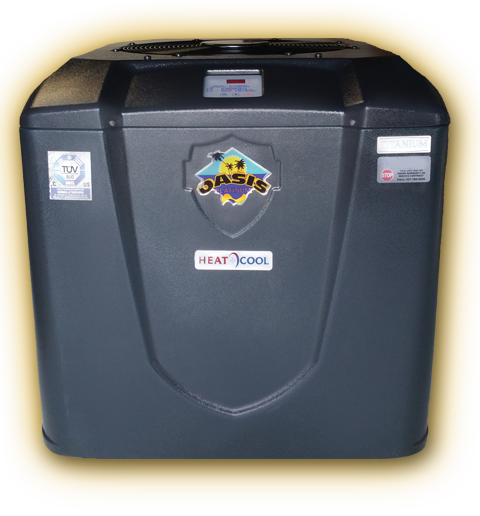


Depending on your location, the average amount of time you’ll need to run your pool heater might be a little bit above or below 12 hours. But overall, as long as you’re running it long enough to keep your pool water above freezing temperatures, you’re good.
Since temperatures drop at night, running your heater while you sleep is usually the most cost-effective. And by covering your pool, you can warm it up faster and keep it warm longer.
4.) Use a Freeze Protector/Automatic Timer to automate water circulation
While reading the previous tips, you might have been asking yourself a few questions, like:
- What if I forget to run my pool heater?
- What if I forget to keep my filter pump running?
- What if I’m not home to watch over the pool?
These are good questions to be asking. Because truthfully, there will be plenty of times when you might not be able to keep an eye on your pool 24/7.
This is why Freeze Protectors/Automatic Timers exist. As the name implies, it protects your swimming pool and pipes from freezing up.
How does a Freeze protector work?
Freeze protectors connect to your pool equipment, and automatically power on your pump and pool heater when freezing temperatures come creeping around. Consider it your robotic pool helper, defending your pool against mean ole Mister Freeze.
Some Freeze Protectors also feature a timed setting, where you can schedule them to power on at specific times or intervals.
5.) Keep your filter pump running 24 hours a day to keep your pipes from freezing
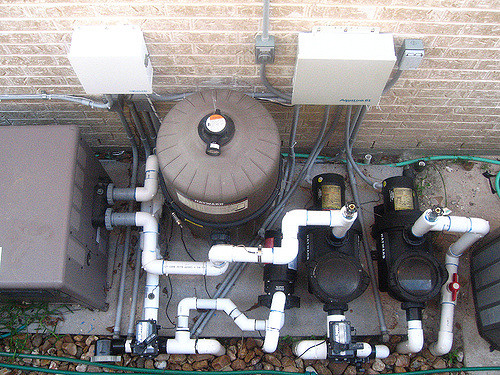


Now if a Freeze Protector doesn’t fit your budget, or you live somewhere with REALLY cold temperatures, then the good old-fashioned way might be your best option.
To protect your pool equipment from cracking and prevent your pipes from freezing, run your filter pump 24 hours a day. This does a few things:
- It keeps your water moving and flowing
- It helps maintain a constant water temperature
- It assists your pool heater by circulating the heated water
For longer periods of use, a variable speed pool pump is much more efficient than a single-speed pump. Not only can you set a variable speed pump to a low setting that saves energy, but you can also speed it up when emergency freeze prevention is needed.
How do I keep my pool pump from freezing?
In the same vein, the best way to keep your pool pump freezing is by never giving it the chance to get cold enough. This means running it as long as it takes to keep the water warm and above freezing temperatures – remember, this can sometimes be over 12 hours a day.
That said if your pump does freeze for some reason, the best course of action is to remove the drain plug and relieve pressure from the system.
6.) Use a “skimmer bottle” to protect the pool skimmer from cracking



Your pool skimmer is easy to forget about. It’s the unsung hero of your swimming pool. It sits quietly in the background, trapping all the unwanted intruders and debris floating on the surface.
During the winter months, your pool skimmer is equally as important for assisting with water flow. But, since it’s mostly made out of thin PVC, it can be subject to serious cracking.
This tip is mostly for those who choose to close their pools, or simply run them a bit less. Although it’s still worth knowing regardless.
Now here’s the logic behind the skimmer bottle:
If the water inside of your skimmer ever freezes, it can cause the plastic fixture to overexpand and crack. But if you use something to absorb all that freeze expansion, you can easily protect your skimmer from damage.
In comes the skimmer water bottle. The bottle works by acting as a pressure absorber, relieving the stress that freezing puts on the walls of your skimmer.
Here’s how to make your own skimmer water bottle:
- Grab an empty water bottle
- Fill it 1/3 with pool antifreeze
- Screw the cap back on
- Drop the bottle into the skimmer
7.) Set all valves to OPEN (or FILTER) for optimal heat distribution
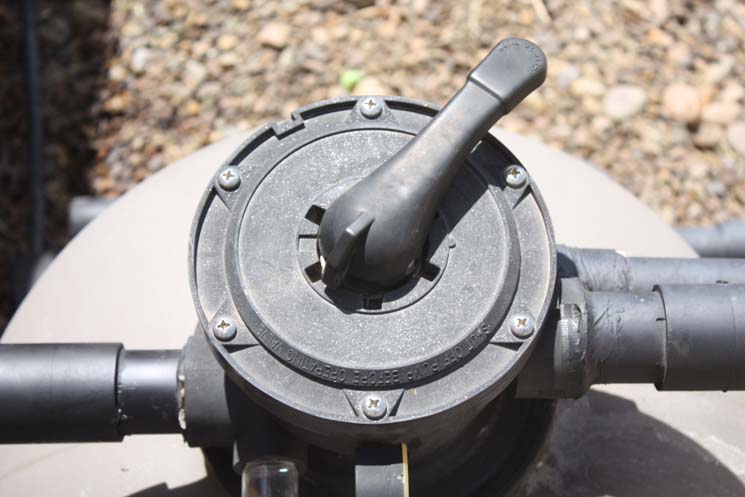


In most cases, the valves in your pool plumbing system will be set to OPEN when your pool runs. But there might be a few cases when you change the valve position, or partially close one of them.
During the wintertime, keeping all of your valves on OPEN is the most effective way to keep your water warm and circulated.
So to be safe, walk over to your pool equipment and make sure all your valves are set to OPEN.
8.) Angle pool jets upwards to prevent surface freezing



Although it might not seem like a big deal, changing the angle of your swimming pool jets has a noticeable effect on your heating efficiency. And while it might not make your pool heater faster, it will change the way it heats.
Consider this: When a container of water freezes, it starts from the surface and works its way down. Your pool follows the same rules.
By angling your return jets upwards, you send a constant blast of heat towards the surface. This does an excellent job of preventing surface ice from forming during rare, frigid temperatures.
9.) Maintain proper water level, always
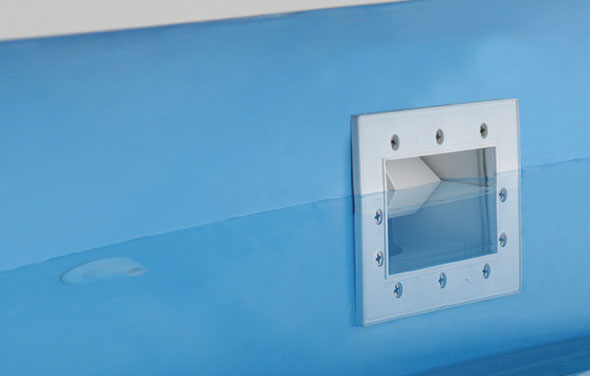


Believe it or not, the wintertime is often the MOST important time to keep track of your water level.
Water levels that are too high or low can cause everything from circulation issues to equipment damage. The only time you want your water level to be below skimmer level is when you winterize your pool and close it for the season.
Otherwise, if your pool’s staying open then keep your water line at exactly mid skimmer level. This allows it to flow freely throughout your pool system, which means more stable water temperatures.
Of course, if you think you might forget to check your water level often enough, then an automatic leveler could be the perfect solution. It keeps track of your pool’s water level for you and automatically adds water as needed.
Related: 15 Cheap Ways To Upgrade Your Swimming Pool
A few extra questions:
What temperature does a pool freeze?
A chlorinated swimming pool freezes at around 32 degrees Fahrenheit, the same temperature as non-chlorinated water.
Do saltwater pools freeze?
Yes, although their freezing point is just a bit lower than regular chlorinated water. Salt water pools freeze usually freeze closer to 28 degrees as opposed to 32, but nonetheless, they still freeze. So, treat it just like any other pool.
Closing thoughts on preventing swimming pool freeze damage
If you take one thing away from this post, let it be this:
Keep your water warm, and well above freezing temperatures to prevent freeze damage.
In essence, it really is that simple. Of course, after reading this article, you know that keeping your pool warm during the winter takes a bit of extra work. But as long as you’re willing to run your heater more often and keep an eye on your water level, it’s more than doable.
And with tools like automatic levelers and freeze protectors, keeping your pool open during the winter is even easier.
If you liked this post, you might also like:

